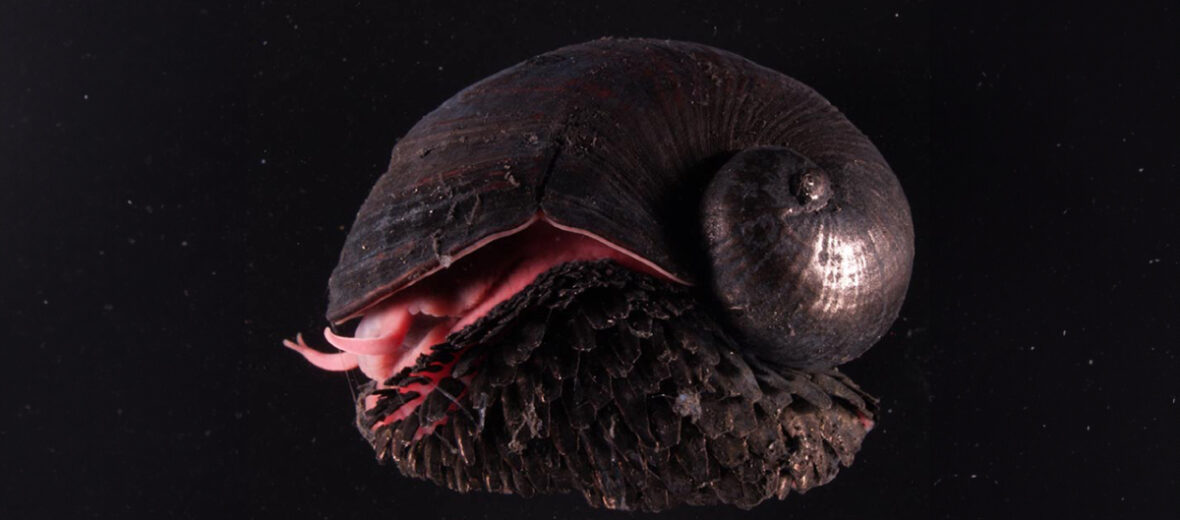
The scaly-foot gastropod, aka scaly-foot snail, sea pangolin, or volcano snail, is a snail species that dwells among deep-sea hydrothermal-vents in the Indian Ocean. They can be found at depths of up to 1.73+ miles. As deep as these critters dwell, they are still subjected to human-based threats, such as mining and quarrying. The IUCN lists these gastropods as Endangered. Their population trend is unknown. This article is dedicated to Shawn D.
First the Stats…
Scientific name: Chrysomallon squamiferum
Length: Up to 1.79 inches
Lifespan: Unknown
Now on to the Facts!
1.) These snails are the first recorded animal to be at risk due to risks from deep-sea mining of its vent habitat.
2.) Their oesophageal gland has a symbiotic gammaproteobacteria where they get their nourishment. Basically they get all their nutrition from the chemoautotrophy of its endosymbiotic bacteria.
3.) The enlarged heart makes up 4% of their body’s volume.
4.) These snails were first discovered in April 2001.
5.) However, it was not officially described in the sense of the International Code of Zoological Nomenclature until Chen et al. later named it back in 2015.
But wait, there’s more on the scaly-foot gastropod!
6.) The generic name Chrysomallon hails from Ancient Greek, and translates “golden haired” – in reference to the pyrite (a compound in its shell) which is golden colored. The specific name squamiferum is Latin and means “scale-bearing”, due to its sclerites.
7.) The sides of this snail’s foot are extremely strange, being armored with 100s of iron-mineralized sclerites, which are composed of iron sulfides, greigite, and pyrite.
Did you know…?
These snails are the first ever recorded animal to utilize iron sulfides into their body. For example, the outer part of their shell is comprised of iron sulphides, the central portion is made of the same matter as other snails, and the inner portion is made up of aragonite.
8.) It is believed that their scales help protect them from vent fluid, so that its bacteria can live close to the source of electrons for chemosynthesis.
9.) These critters are blind, as they live in total darkness and have no need for vision.
10.) They are simultaneous hermaphrodites (possess both testis and ovaries) yet have no copulatory organ. These critters self fertilize for reproduction.
Now a Short Scaly-Foot Gastropod Video!
Be sure to share & comment below! Also, check out the Critter Science YouTube channel. Videos added regularly!
Want to suggest a critter for me to write about? Let me know here.
Some source material acquired from: Wikipedia & IUCN
Photo credit: iNaturalist



